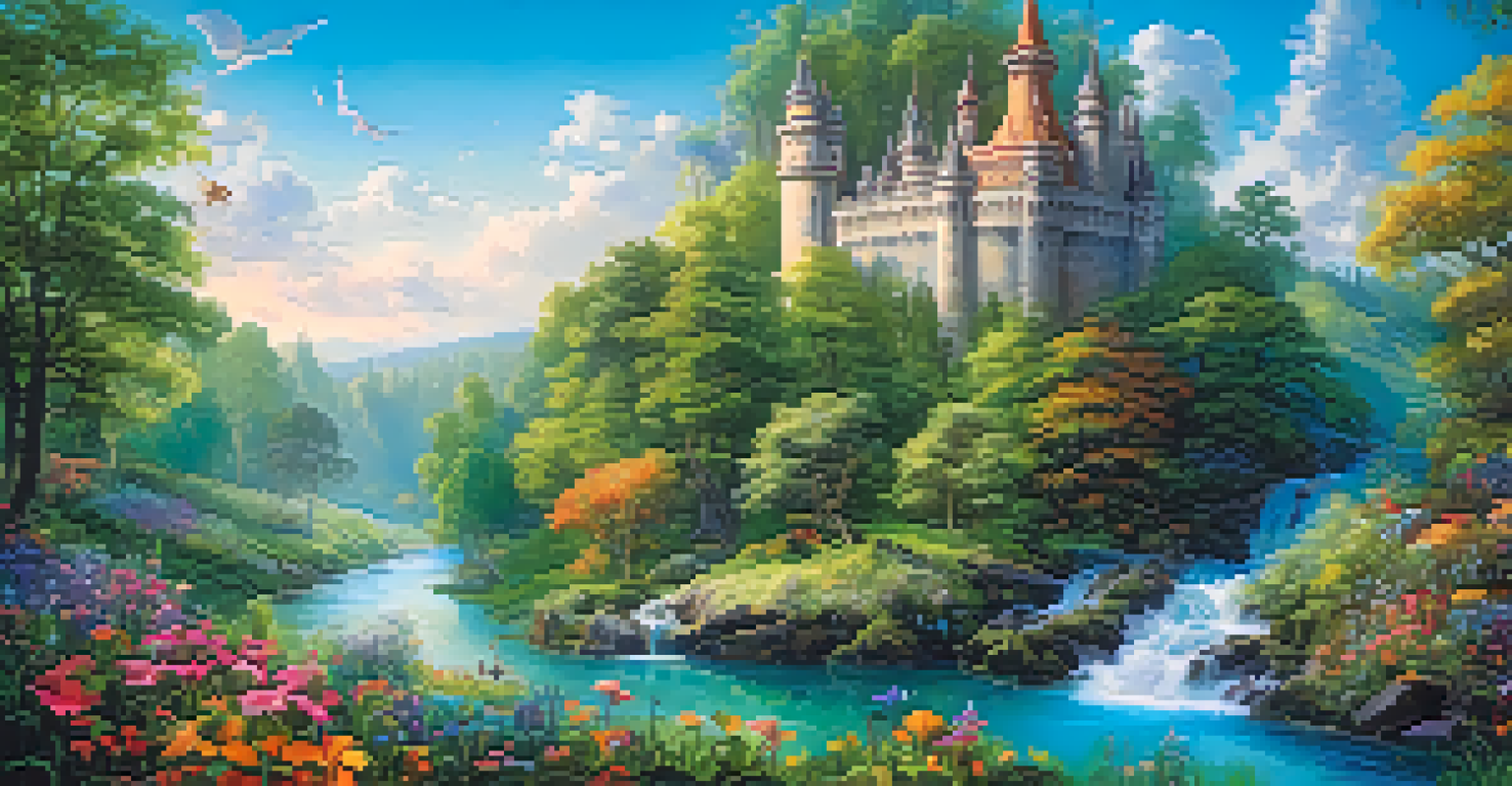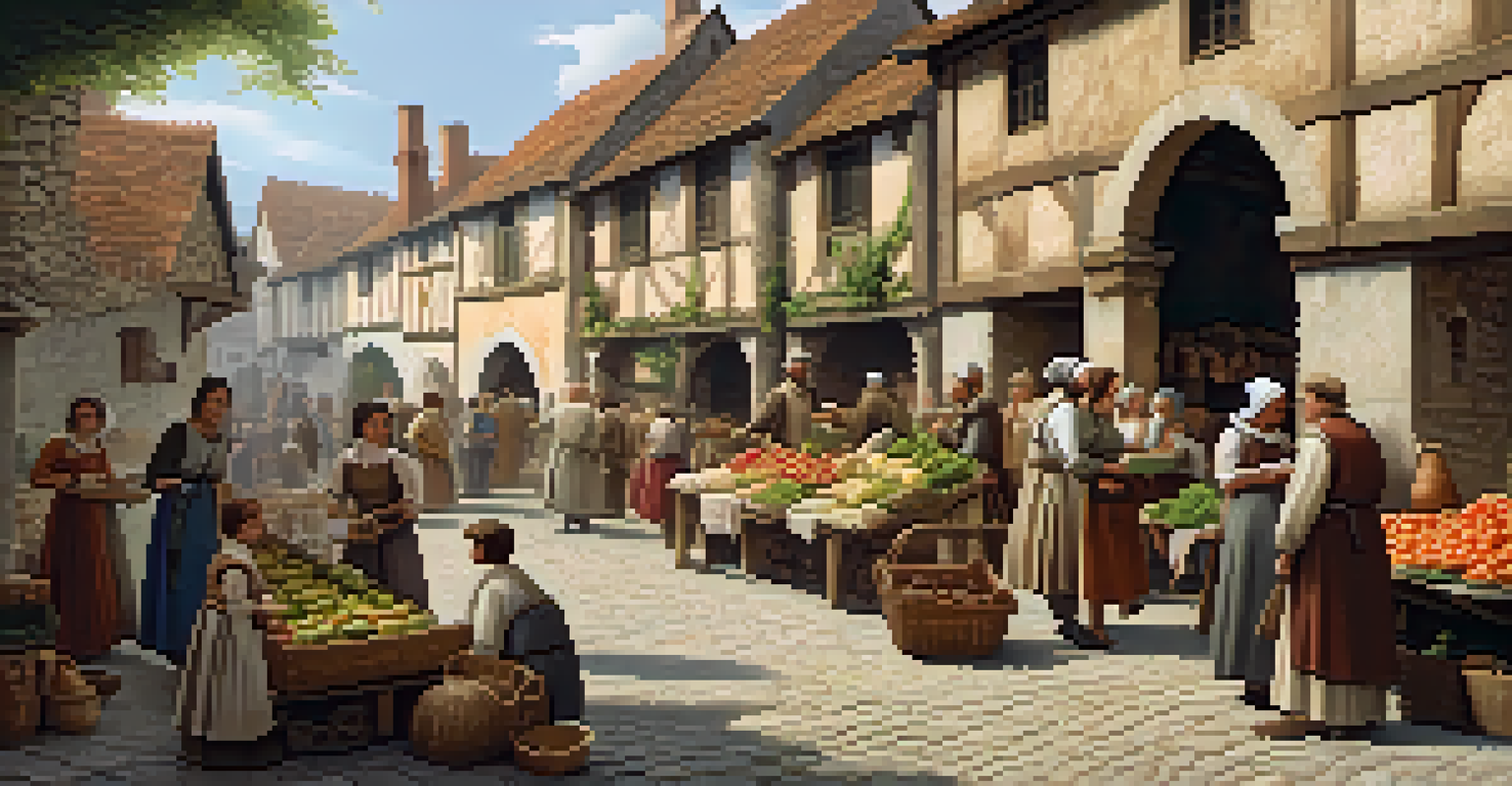Comparative Analysis: Literary Genres and Their Film Adaptations

Understanding Literary Genres: A Brief Overview
Literary genres categorize works based on shared themes or styles, such as fiction, nonfiction, poetry, and drama. Each genre offers distinct narrative structures and emotional resonances, shaping how stories are told and experienced. For instance, while fiction often allows for imaginative worlds, nonfiction relies on factual accuracy and real-life events. Recognizing these nuances is essential for appreciating how stories transition from page to screen.
A book is a dream that you hold in your hand.
Genres also influence audience expectations. A mystery novel sets up a puzzle for readers to solve, while a romance novel typically promises emotional connections and resolutions. These expectations guide filmmakers as they adapt stories for film, requiring them to honor the essence of the original genre while making necessary adjustments for cinematic storytelling. Understanding these dynamics can deepen our appreciation for adaptations.
Moreover, the interplay between genres can lead to hybrid adaptations, giving rise to films like romantic comedies or action-packed dramas. These hybrids can attract diverse audiences, demonstrating the flexibility of genres. When a story straddles multiple genres, it can challenge traditional expectations and broaden the scope of its narrative, making it all the more compelling for viewers.
The Transformation of Novels into Films
Adapting a novel into a film is like translating a conversation from one language to another; it requires capturing the essence while changing the medium. Filmmakers must condense complex plots and character arcs into a two-hour runtime, often leading to significant changes. For instance, in adapting a sprawling epic like 'The Lord of the Rings,' filmmakers had to focus on key narrative threads while maintaining the story's heart.

Character development can also shift dramatically in adaptations. A character's inner thoughts in a novel might be expressed through voiceovers or visual cues in a film. This change can enhance or diminish a character's depth, depending on how effectively filmmakers portray their motivations and relationships. The challenge lies in preserving the original character's spirit while utilizing the strengths of visual storytelling.
Understanding Genre Adaptations
Literary genres shape audience expectations, influencing how stories are adapted from page to screen.
Additionally, the pacing of a film differs from that of a novel. Where a book might spend chapters building tension, a film needs to deliver the same emotional impact more quickly. This can lead to the omission of subplots or side characters, which may frustrate purists but can also streamline the narrative for broader audiences. Ultimately, the success of an adaptation often hinges on finding the right balance between fidelity to the source material and the demands of cinematic storytelling.
Short Stories: Brevity and Impact on Screen
Short stories pack a punch in a limited word count, making them intriguing candidates for film adaptations. Their concise nature often centers around a pivotal moment or revelation, which filmmakers can effectively translate into a powerful visual experience. A great example is 'The Secret Life of Walter Mitty,' where the story's core themes of adventure and self-discovery are expanded into a rich cinematic journey.
Film is a very powerful medium that can be used to tell stories, but it can also distort them.
The challenge with adapting short stories lies in their brevity. Directors and screenwriters must decide whether to remain faithful to the original narrative or expand upon it to create a more fleshed-out film. This can lead to mixed results; sometimes the added context enriches the story, while other times it risks diluting the original's charm. The key is to honor the essence of the short story while crafting a compelling film narrative.
Moreover, the emotional depth of a short story can resonate profoundly with audiences, making its adaptation all the more significant. A well-executed adaptation can evoke the same feelings as the written work, capturing the audience's heart in a short span. This ability to convey complex emotions succinctly is a testament to the power of both short stories and their film counterparts.
The Allure of Fantasy: Worlds Beyond Imagination
Fantasy literature opens the door to worlds filled with magic, mythical creatures, and epic quests. These elements present unique opportunities and challenges when adapted into film. For example, the 'Harry Potter' series successfully transported readers into a visually stunning universe, utilizing special effects and elaborate set designs to bring J.K. Rowling's world to life, creating a cultural phenomenon in the process.
However, the expansive nature of fantasy stories can lead to complexities in adaptation. Filmmakers must make choices about which elements to include or exclude, often sparking debates among fans about the fidelity to the source material. The balance between maintaining the original story's spirit and creating a manageable film narrative is crucial. Adapting fantasy necessitates a strong vision, as filmmakers navigate the fine line between creativity and coherence.
Challenges of Novel-to-Film Adaptations
Adapting novels requires filmmakers to condense complex narratives into a manageable format while retaining character depth.
Moreover, the success of fantasy adaptations often hinges on world-building. Audiences crave immersive experiences that allow them to escape reality, and a well-crafted film can provide just that. Through stunning visuals and captivating storytelling, filmmakers can create a sense of wonder that resonates with both fans of the original works and newcomers alike. This allure of fantasy makes it a genre that continues to thrive on both page and screen.
Historical Fiction: Bridging the Past and Present
Historical fiction serves as a bridge between the past and present, inviting readers into different eras while exploring timeless themes. When adapted into films, this genre can bring history to life, making it accessible and engaging for modern audiences. Take the film '12 Years a Slave,' which not only tells a gripping story but also educates viewers about a dark chapter in history, highlighting the power of cinematic storytelling.
The challenge with historical fiction adaptations is balancing dramatic storytelling with historical accuracy. Filmmakers often face scrutiny from historians and audiences alike regarding the portrayal of events and figures. While some liberties must be taken for dramatic effect, maintaining a commitment to factual integrity is crucial to resonate with viewers. The success of such adaptations often lies in their ability to evoke genuine emotion while respecting the historical context.
Additionally, the visual medium allows filmmakers to recreate historical settings in a way that literature may only suggest. Costume design, cinematography, and set design can transport viewers to another time, enriching the narrative experience. When done well, these elements enhance the storytelling, creating a vivid tapestry that immerses audiences in the world of the film, thus making history not just something to read about, but something to experience.
The Role of Science Fiction in Film Adaptations
Science fiction thrives on imaginative concepts, pushing the boundaries of reality and exploring what could be possible. This genre translates well to film, where technology and visual effects can bring futuristic ideas to life. Movies like 'Blade Runner' exemplify this, showcasing a dystopian world that challenges viewers' perceptions of humanity and technology, a hallmark of great sci-fi storytelling.
However, adapting science fiction often involves grappling with complex themes and speculative ideas, which can be a double-edged sword. Filmmakers must distill intricate concepts into digestible narratives without losing their essence. For instance, 'The Martian' successfully balances scientific accuracy with engaging storytelling, allowing audiences to appreciate both the challenges and triumphs of its protagonist in a hostile environment.
The Impact of Visual Storytelling
The visual medium enhances storytelling, particularly in genres like fantasy and science fiction, by creating immersive experiences for audiences.
Moreover, the visual aspect of science fiction allows for expansive world-building and creativity. From alien landscapes to advanced technologies, filmmakers have the opportunity to captivate audiences with stunning visuals that enhance the narrative. When executed well, the combination of engaging storylines and impressive visuals creates a cinematic experience that resonates long after the credits roll, showcasing the unique power of science fiction adaptations.
Romantic Adaptations: Love Stories on the Big Screen
Romantic literature often delves into the complexities of love and relationships, making it a popular genre for film adaptations. Love stories like 'Pride and Prejudice' have been reimagined numerous times, each adaptation offering a fresh perspective while retaining the essence of the original narrative. The interplay of character emotions and societal expectations creates a rich tapestry for filmmakers to explore.
However, adapting romantic stories requires careful consideration of pacing and emotional depth. The chemistry between characters is paramount, and filmmakers must ensure that this connection translates well on screen. A well-executed adaptation captures the tension and intimacy of romantic relationships, allowing audiences to invest emotionally in the characters' journeys. This is often what transforms a good adaptation into a beloved classic.

Additionally, the cultural context surrounding love stories can shift over time, making it essential for adaptations to resonate with contemporary audiences. Modern interpretations of classic romances might incorporate current social themes, enhancing their relevance. By bridging the gap between the past and present, filmmakers can create love stories that speak to audiences across generations, reminding us that the complexities of love remain timeless.